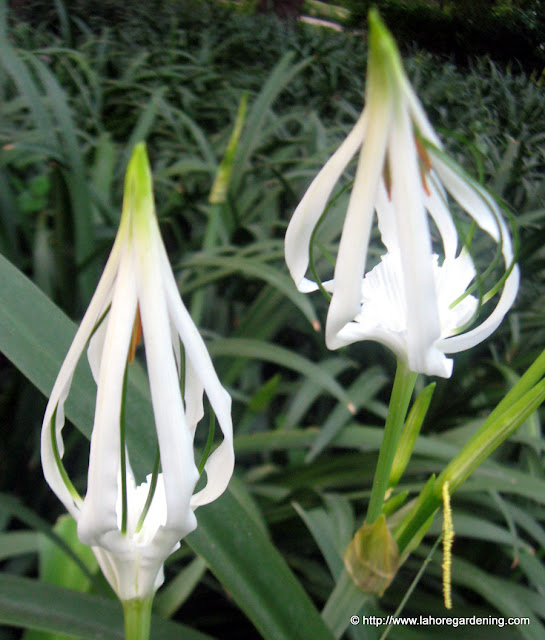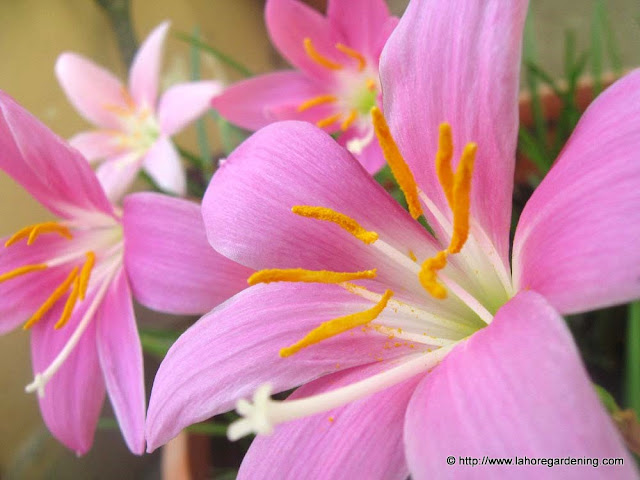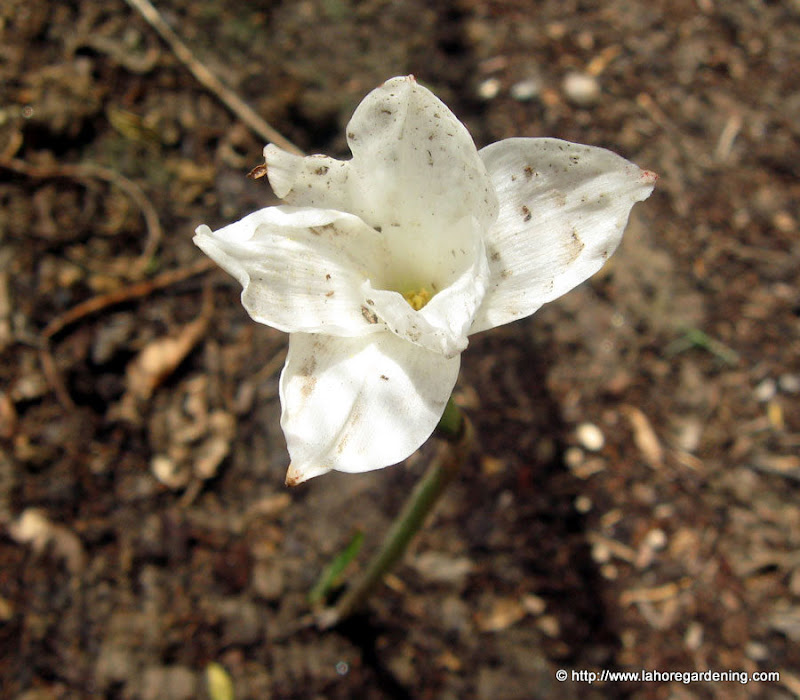The first bloom, and because fragrance is my first preference, is crinum lily. They are growing wild in the Lawrence gardens. They bloom in july-October here in lahore. wonderful fragrance.

With botanical name crinum latifolium and common name milk and wine lily they are easiest of perennial bulbs to grow. Two colors are common. The white one below and there is another one bicolor, pink and white crinum.

Another crinum having very interesting buds is Crinum asiaticum with common names spider lily, grand crinum lily. It has the largest bulbs i have ever seen. the fragrance is not very sweet and flowers not very showy but buds are worth capturing.

This is some unknown flower to me blooming profusely in lawrence gardens lahore. any help with the ID will be appreciated.

This is giant potato tree with botanical name Solanum macranthum . Like many other solanum plants, the color of flower changes and you will find many colors blooms on same plant at once. Flowers are very mildly fragrant. A close relative is Solanum seaforthianum with common name italian jasmine, more fragrant than this one, and which i intend to grow from seed very soon.

And last but not least, here comes murraya exotica orange jasmine. The fragrance is divine and unbeatable. Blooming on my terrace in a large clay pot. They bloom extensively in monsoon rains.











